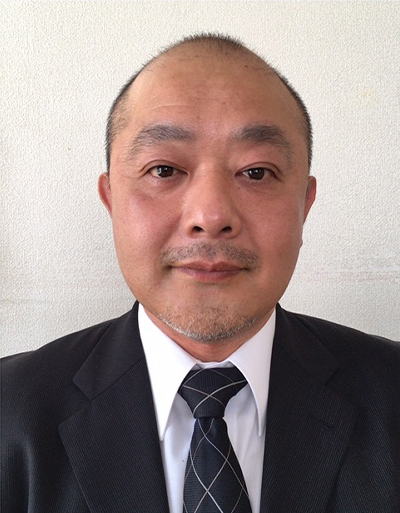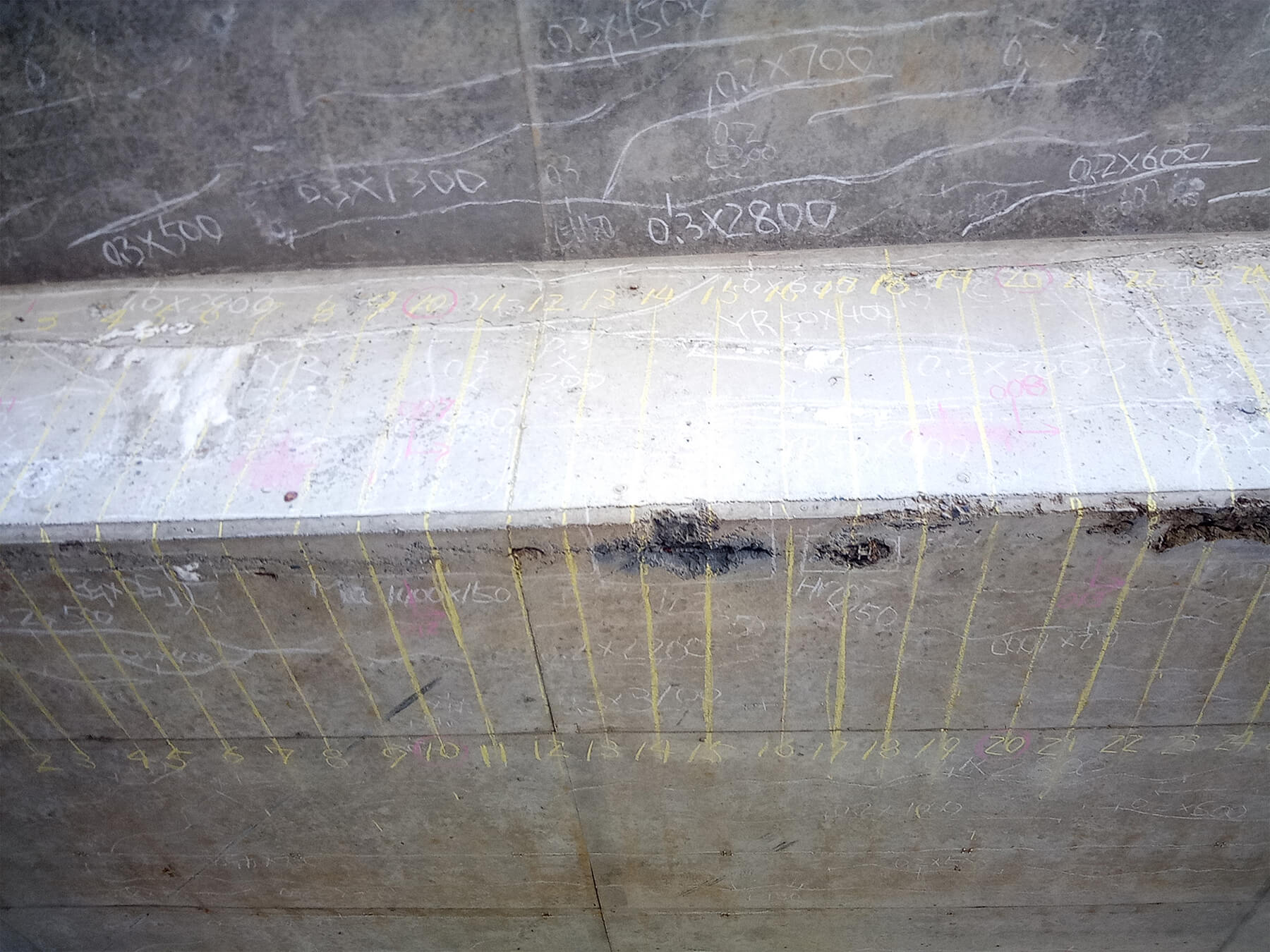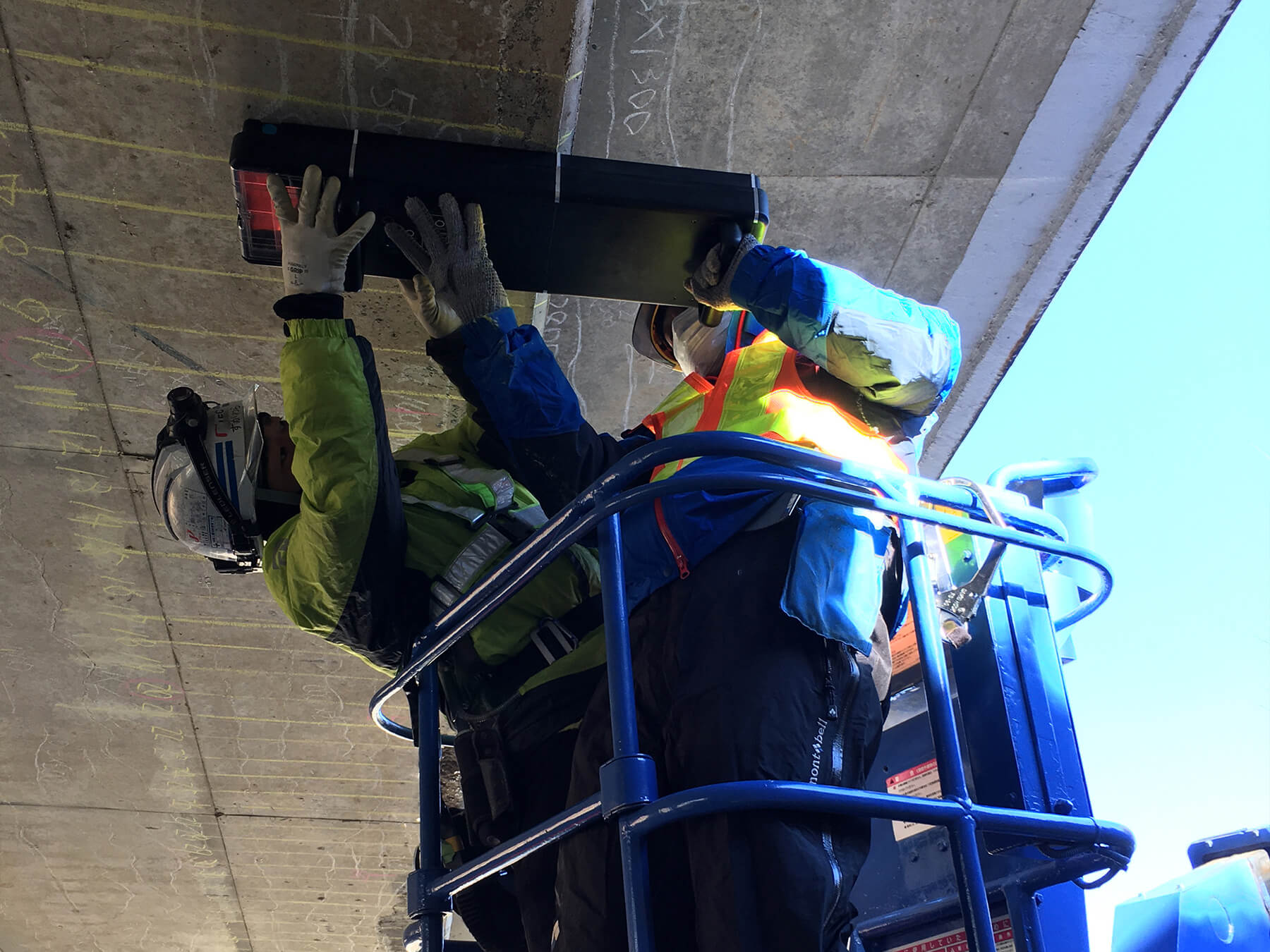Case and interview
Manuals have been created for testing for prestressed concrete tendon ruptures using the flux leakage method
We protect the health of infrastructure as the regular physician for expressways

As a member of the Nexco East Japan group, which is in charge of maintaining expressways, the infrastructure that forms the backbone of the nation, Nexco-East Engineering Co., Ltd. mainly carries out work like inspection management, survey design, and construction management for road structures. Here, we are speaking to Mr. Hisamitsu Kitanosono of the Structural Technology Section, Civil Engineering Survey Design Department, Civil Engineering Business Unit of Nexco-East Engineering Co., Ltd., the regular physician for expressways.
We had issues with the conventional flux leakage method and decided to try SenrigaN, too.
› What was the trigger for trying out SenrigaN?
NEXCO’s survey outline lists the flux leakage method as a rupture testing method for prestressed concrete internal tendons, and thinking about needs for the future, I was trained in the flux leakage method and evaluated it. However, it had a number of issues, and I was looking for other methods while I used it. The Konica Minolta appearance at the ERF Robotics Forum was the spark that introduced me to SenrigaN as new technology. At the time, I had found a bridge with potential rebar ruptures due to an alkali-aggregate reaction. In bridges with an alkali-aggregate reaction, the aggregate comes into contact with water and expands, possibly risking rupturing the bent sections of the rebar, which is the weak point, and we decided to try surveying the conditions.

The effects of salt damage in prestressed concrete internal tendons proceed quietly, and sometimes by the time we notice, the situation is already very serious. To prevent this, non-destructive testing of the prestressed concrete internal tendons is important.
› You said that you were interested in the flux leakage method from before, but what led to your interest being sparked?
The prestressed concrete anchorage in prestressed concrete bridges is easily affected by salt damage at the beam ends and particularly under the road surface in older prestressed concrete bridges. In addition, if there is no grout, saltwater easily penetrates into the sheath and the tendons corrode in a short time. Abnormalities like this often have a progression that is not visible externally, so I thought it was important to launch into surveys early without missing the smallest signs.
For this reason, I was strongly interested in methods for gaining information on the health of prestressed concrete bridges, and I looked into and evaluated various methods. Amid this process, the survey outline at NEXCO listed the “flux leakage method” as a method of surveying for ruptures in prestressed concrete tendons, in addition to the conventional survey methods, so I came to focus my attention on that.

› What were your impressions after using SenrigaN?
The last time I used it, I was able to confirm through testing that there were no ruptures. Although this comparison is with the existing flux leakage method, I felt that the magnet is more compact and the system is more practical. In response to this, the level of the sensor has been adjusted to make the rupture signal easier to see. We had scheduled two days on the actual site, but we finished testing in one day and were able to check the testing results then and there and confirm from the signals that there were no ruptures, so we succeeded in shortening our schedule. The work proceeded quickly and I experienced how efficient it was. I think it is a technology that inspires hope.
Before we used slightly destructive testing, but recently we have shifted towards non-destructive testing.
› Have you tried any other means?
Because X-rays mean that we have to bring considerable equipment in, I do not think that we would use it much on site. About the only non-destructive testing that we would operate on site is the existing flux leakage method. Other than that, we may open a pinhole and look with a fiberscope, but the section that we can test is too small and the probability of discovering an abnormality or the like is too low. I feel that we have been using non-destructive testing wherever possible lately.
› What are you doing about incorporating new technologies?
The company is actively incorporating new technologies. We are constantly gathering information about non-destructive testing methods that enable confirmation of the state of sections that are difficult to inspect and survey, in particular.
› What are your expectations for non-destructive testing for internal tendon ruptures?
With there being so many prestressed concrete bridges, I believe that it would be impossible to broadly and quickly gain an understanding of the health of the innumerable prestressed concrete internal tendons without non-destructive testing. However, prestressed concrete internal tendons are covered by closely arranged rebar, they are found under deep covering, and they vary widely by type and thickness, so there are still some difficulties in measurement, but I hope for these hurdles to be removed, even just a little, so that we can have a method for easily getting information on health. All the better if we can see cross-section losses due to partial ruptures or partial corrosion in prestressed concrete tendon stranded wire. I would love to be able to discover abnormalities at the initial stages. I look forward to it.
› Tell us about your outlook for the future.
I think that the need for information about the health of prestressed concrete internal tendons in prestressed concrete bridges is growing. If I have the opportunity, I would like to use Konica Minolta’s SenrigaN again.


